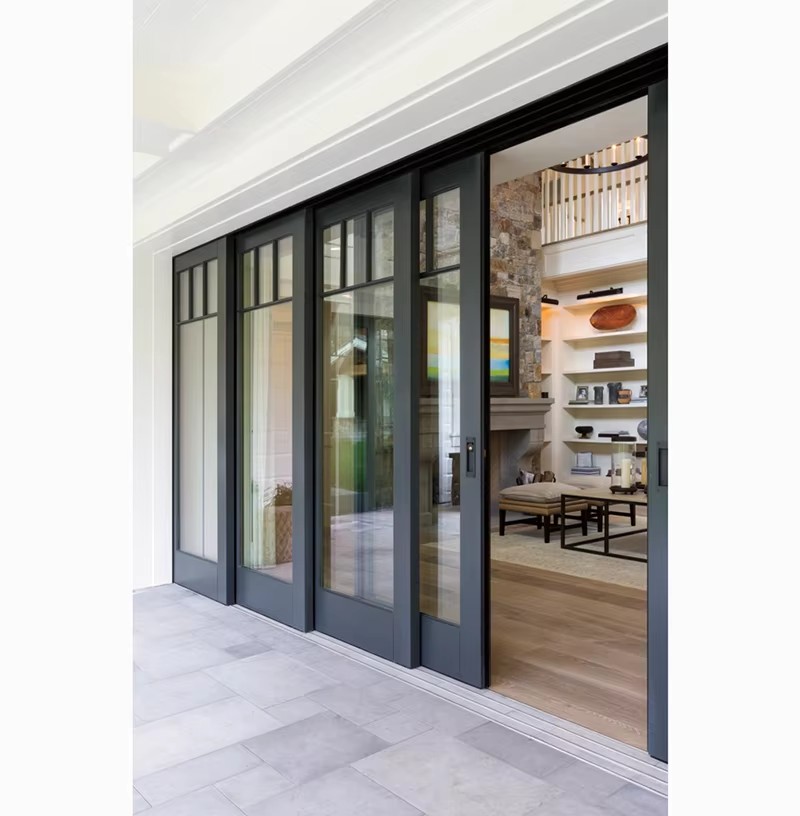- Market Segmentation and Demand Analysis
The global door and window market shows significant regional differences, requiring a precise market segmentation strategy. In Europe and North America, there are strict requirements for energy efficiency. For example, Germany’s Passive House standard requires a whole-window U-value ≤ 0.8W/(m²·K). Jianmei’s system windows, certified by PHI and CSA, attracted over 2,000 buyers at the Canton Fair with their ultra-low energy products. In contrast, the Middle East and African markets demand products that withstand extreme climates. Jianmei has developed heat-resistant, sand-proof windows that have been applied in high-end projects in the UAE. Southeast Asian markets favor cost-effective aluminum alloy windows, with aluminum window exports up 35.2% year-on-year in 2024, making them a trending category. While Africa’s technical base is relatively low, its accelerating urbanization is driving annual demand growth of over 10%, calling for modular, easy-to-install products.
To match these market-specific demands, a dynamic demand-response mechanism must be established. The North American market, for instance, requires innovations like warm-edge technology and removable installation wings. Doorwin’s American-style aluminum-clad wooden sliding windows reduced per-window costs by 28%, successfully entering the Texas real estate market. European markets require CE certification and compliance with standards like EN 14351-1 for airtightness and water resistance. Emerging markets must adhere to local building codes, such as special fire door standards in Southeast Asia—Maxson Group’s fire doors for Cambodia’s new airport passed local certifications.

- Technological Innovation and Certification Systems
Technological advancement is the core barrier to global competition. Chinese door and window enterprises need to build a technology transformation chain that integrates “basic R&D – standard certification – scenario application.” In energy efficiency, Jianmei has achieved a top-tier whole-window U-value of 0.79W/(m²·K) using surface treatments like powder coating and anodizing. In smart window technology, Xinhaoyang developed a sliding pressure-sealed window with aquarium-grade sealing, tailored for the Middle East’s hot and sandy environment, reaching annual sales of over 100 million RMB. In green tech, Amber Windows earned WGO (World Green Organization) certification, reducing carbon emissions per window by 30–48kg per year, serving as a Chinese model in global climate governance.
Certification is a passport to high-end markets. The North American market requires CSA certification, including a wind pressure rating of Class 9 (5.0 kPa); Jianmei’s system windows met this and successfully entered Canada and the U.S. In Europe, compliance with CPR regulations and EN 16034 fire safety standards is necessary. Emerging markets require local certifications like Russia’s GOST and India’s BIS. Royal Pai Windows earned CNAS accreditation, ensuring test results with international credibility, paving the way into the EU market.
- Brand Localization and Ecosystem Development
Brand building must evolve from “Made in China” to a “Global Brand.” Doorwin has focused on the North American market, opening direct stores in Dallas and Los Angeles and establishing technical service centers, completing its transition from product export to brand localization. In 2024, its North American sales exceeded USD 1 billion. Jianmei shaped its “Green Smart Manufacturing” brand image by participating in international expos such as the Canton Fair and Germany’s Interzum, attracting buyers from the UAE and Canada for factory visits. At the ESG Climate Action Summit, Amber showcased zero-carbon technology and partnered with international developers, promoting Chinese green standards abroad.
Localized operations require a regional ecosystem integrating “R&D – production – service.” Doorwin plans to build a factory in North America to enable 18-day rapid delivery and apply for U.S. patents to strengthen technical barriers. Xinhaoyang leveraged Zhoukou Port’s logistics route to ship goods via Huaian to Dubai, reducing transport costs by 33% and improving delivery speed by 40%. SMEs can emulate Wanjia Windows by expanding to over 150 countries and regions via Alibaba International, achieving annual sales growth over 30%.

- Channel Innovation and Supply Chain Optimization
Channel strategies should integrate “online-offline synergy and direct-distribution collaboration.” Online, platforms like Alibaba International and Google Ads reach global buyers—online aluminum window exports hit USD 626 million in 2024, up 35.2% year-on-year. Offline, companies attend global expos and set up overseas showrooms—Jianmei facilitated multiple client visits during the Canton Fair, successfully converting them into orders. On logistics, aluminum window exporters in Wujiang, Jiangsu used China-Russia rail freight to deliver to Moscow in 10–15 days, cutting transport costs by 20% compared to sea freight.
Efficient supply chain management involves “flexible production – rapid response – cost control.” Doorwin built five domestic joint-venture factories with an annual capacity exceeding 500,000 m², supporting both custom and bulk orders. Xinhaoyang uses automated production lines for continuous 24-hour operation with a product pass rate exceeding 98%. SMEs can utilize third-party logistics providers like Zhiyao Freight’s tax-included double-clearance services to Thailand to reduce customs risks and costs.
- Policy Support and Industry Upgrading
Policy coordination is vital for global strategy. The Chinese government supports exports with tax rebates and initiatives like the Belt and Road, reducing enterprise costs. Maxson leveraged the New Western Land-Sea Corridor to export to Egypt and the UAE, achieving a 17% export increase in 2024. Industry associations should promote standard internationalization. According to the China Timber & Wood Products Distribution Association, wooden door exports reached USD 807 million in 2024, up 17.07% year-on-year. There is a need to further integrate enterprise resources and build overseas service networks.

